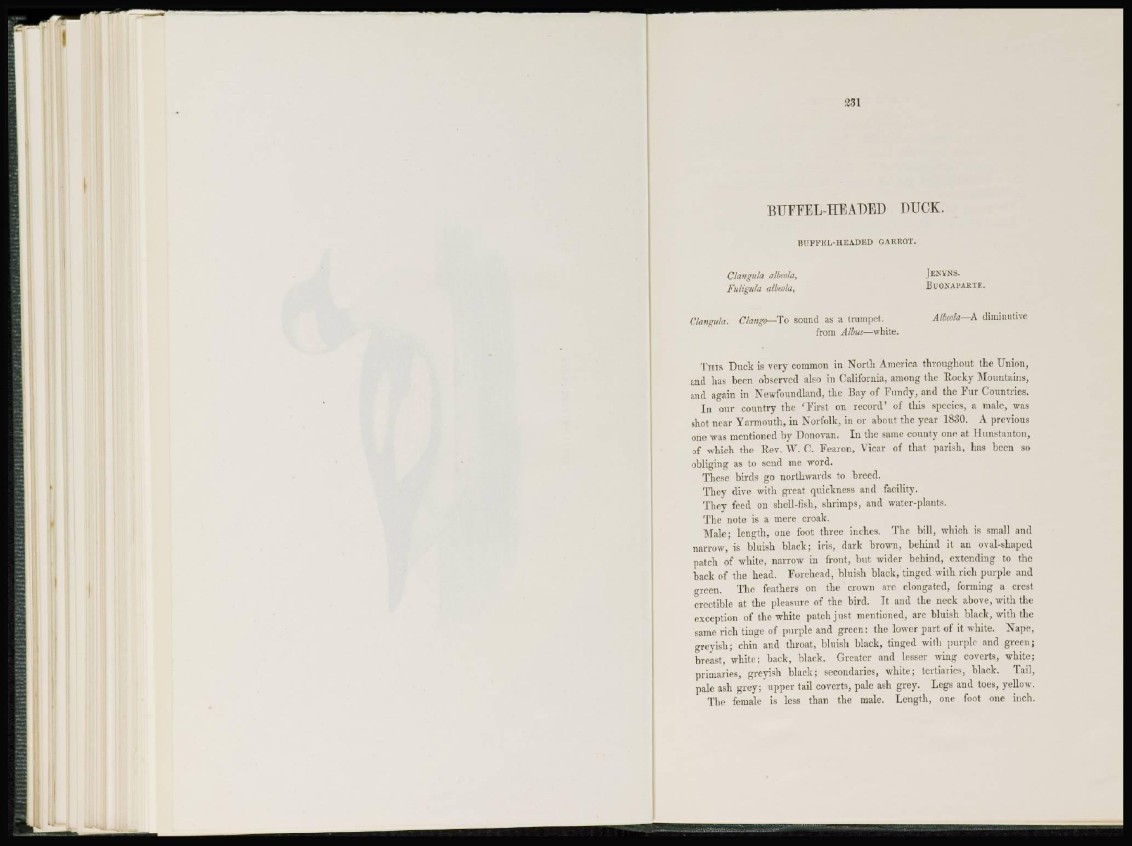
BTIPFEL-HE A T)ET) DUCK.
BTJ F F E L -IIE AD B D Q A R ROT.
Clangula albeola, JENYNS.
Fuligula albeola, BUONAPARTE.
Clangula. Clango—To sound as a trumpet. Albeola—A diminutive
from Aldus—white.
THIS Duck is very common in North America throughout the Union,
and has been observed also in California, among the Rocky Mountains',
and again in Newfoundland, the Bay of Fundy, and the Fur Countries.
I n our country the ' F i r s t on record' of this species, a male, was
shot near Yarmouth, in Norfolk, in or about the year 1830. A previous
one was mentioned by Donovan. In the same county one at Hunstanton,
of which the Rev. W. C. Fcaron, Vicar of that parish, has been so
obliging as to send me word.
These birds go northwards to breed.
They dive with great quickness and facility.
They feed on shell-fish, shrimps, and water-piants.
The note is a mere croak.
Male; length, one foot three inches. The bill, which is small and
narrow, is bluish black; iris, dark brown, behind it an oval-shaped
patch of white, narrow in front, but wider behind, extending to the
back of the head. Forehead, bluish black, tinged with rich purple and
green. The feathers on the crown are elongated, forming a crest
crcctible at the pleasure of the bird. It and the neck above, with the
exception of the white patch just mentioned, are bluish black, with the
same rich tinge of purple and green: the lower part of it white. Nape,
greyish; chin and throat, bluish black, tinged with purple and green;
breast, white; back, black. Greater and lesser wing coverts, white;
primaries, greyish black; secondaries, white; tcrtiarics, black. Tail,
pale ash grey; upper tail coverts, pale ash grey. Legs and toes, yellow.
The female is less than the male. Length, one foot one inch.